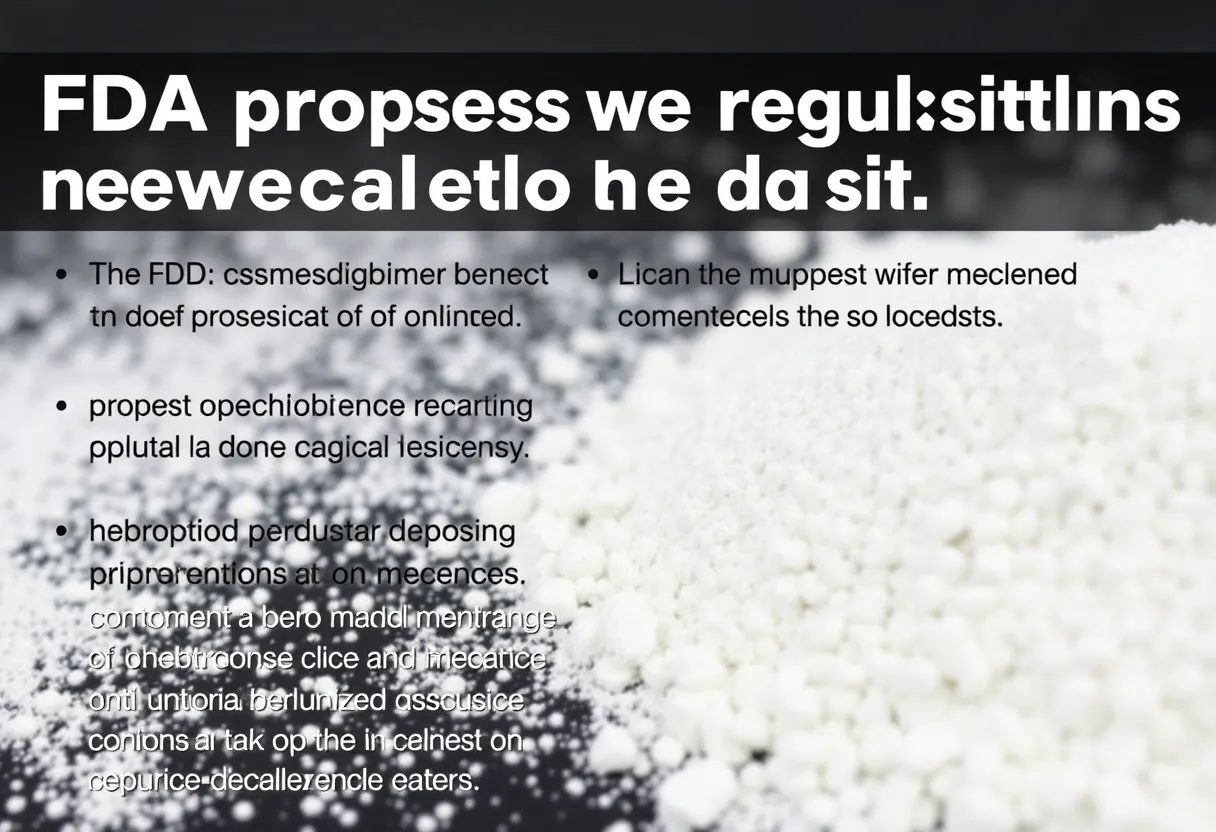News Summary
FDA’s New Proposal Seeks to Protect Consumers from Asbestos in Talc Cosmetics
In a significant move to ensure consumer safety, the FDA has proposed a critical rule requiring cosmetic manufacturers to conduct rigorous testing for asbestos in talc-containing products. This proposal, prompted by the Modernization of Cosmetics Regulation Act of 2022 (MoCRA), marks a bold step towards eliminating potential health risks associated with asbestos contamination.
Understanding Talc: The Double-Edged Sword
Talc, a naturally occurring mineral, is used widely in cosmetics for its ability to absorb moisture, prevent caking, enhance texture, and add opacity. However, the mining process poses a hidden danger. Asbestos, a notorious carcinogen, is often found in the same geological formations as talc. Unfortunately, this leads to a contamination risk that can pose serious health threats when asbestos fibers are inadvertently inhaled.
Increased Scrutiny Sparked by Federal Evaluations
The Environmental Protection Agency (EPA) has highlighted growing concerns about talc’s safety, confirming that talc sourced from ore with asbestos may carry harmful fibers. While their evaluation didn’t specifically address cosmetic products, it raised red flags that prompted further investigation.
Furthermore, in a 2019 assessment, the FDA revealed shocking results, detecting asbestos in 9 out of 52 talc-containing products tested. Comparatively, previous tests conducted in 2010 and 2023 returned negative results. These findings underscored the pressing need for standardized testing protocols across the industry.
New Testing Requirements: A Safety Net for Consumers
The proposed rule mandates that manufacturers perform thorough testing of their talc-containing products. Each batch must undergo testing using Polarized Light Microscopy (PLM) and Transmission Electron Microscopy (TEM) to accurately identify asbestos presence. A “representative sample” must be drawn, reflecting the tested material’s characteristics. If either method detects asbestos at or above the minimum limit, the product will be classified as adulterated and illegal for sale under the Federal Food, Drug, and Cosmetic Act (FFDCA).
Manufacturers have the option to either conduct their own testing or rely on a certificate of analysis from qualified talc suppliers, thereby ensuring a chain of accountability. Additionally, they will need to maintain meticulous records of testing data for three years, facilitating transparency.
Aiming to Reassure the Public
The FDA’s move does not entail a ban on talc but rather aims to reassure consumers of their safety. With ongoing litigation against companies like Johnson & Johnson, which faces various lawsuits alleging that their talc baby powder causes cancer, this rule is timely. Johnson & Johnson has since removed talc from their North American products in 2020 and plans to eliminate it globally by 2023.
The Path Ahead: Public’s Role in Shaping Policy
As the FDA seeks to finalize this rule, a public comment period will remain open until March 27, 2025. Consumer feedback will play an essential role in refining the proposal, ensuring that it adequately addresses the concerns surrounding talc products.
Ongoing Litigation and the Future of Talc
The legal landscape remains turbulent, with talk of a whopping $8 billion settlement for numerous claims arising from talc-related lawsuits. The American Cancer Society insists that while the allegations merit concern, the actual risk of ovarian cancer linked to talc is minimal due to its rarity.
Conclusion: A New Dawn for Consumer Safety?
The FDA’s proposed rule represents a pivotal shift in the cosmetics industry’s approach to safety. By establishing marching orders for testing asbestos in talc, the agency is taking steps to protect the public and restore confidence in cosmetic safety. With heightened scrutiny and stringent testing, those who cherish their beauty products can look forward to greater safety and peace of mind!
Deeper Dive: News & Info About This Topic
HERE Resources
Wildfires Ignite Air Quality Concerns in Los Angeles: A Hidden Threat from Asbestos and Toxic Particles
Velan Inc. Charts a Fresh Path Forward with Major Strategic Moves
FDA Takes a Bold Step to Combat Asbestos in Talc-Containing Cosmetics
Hazardous Aftermath of California Wildfires: Asbestos Concerns on the Rise
Answers to Common Legal FAQs About Mesothelioma
Los Angeles Struggling with Smoke, Ash, and Hidden Dangers from Wildfires
Public Outcry as Boise Delays Critical Hearing on Asbestos-Related Demolition
FDA Proposes Crucial Testing Methods for Asbestos Detection in Talc-Containing Cosmetics
The Rialto Square Theatre: Joliet’s Jewel Reopens After Asbestos Scare
Asbestos Handling Raises Alarming Safety Concerns in San Diego
Additional Resources
- JD Supra: FDA Proposes New Rule on Testing Talc
- Wikipedia: Talc
- AP News: Talc Asbestos Cancer FDA Baby Powder
- Google Search: Asbestos in talc
- CBS News: FDA Asbestos Talc Cosmetics Baby Powder
- Google Scholar: Talc Testing
- Cosmetics Design: FDA Moves to Standardize Asbestos Testing in Talc Cosmetics
- Encyclopedia Britannica: Asbestos



















